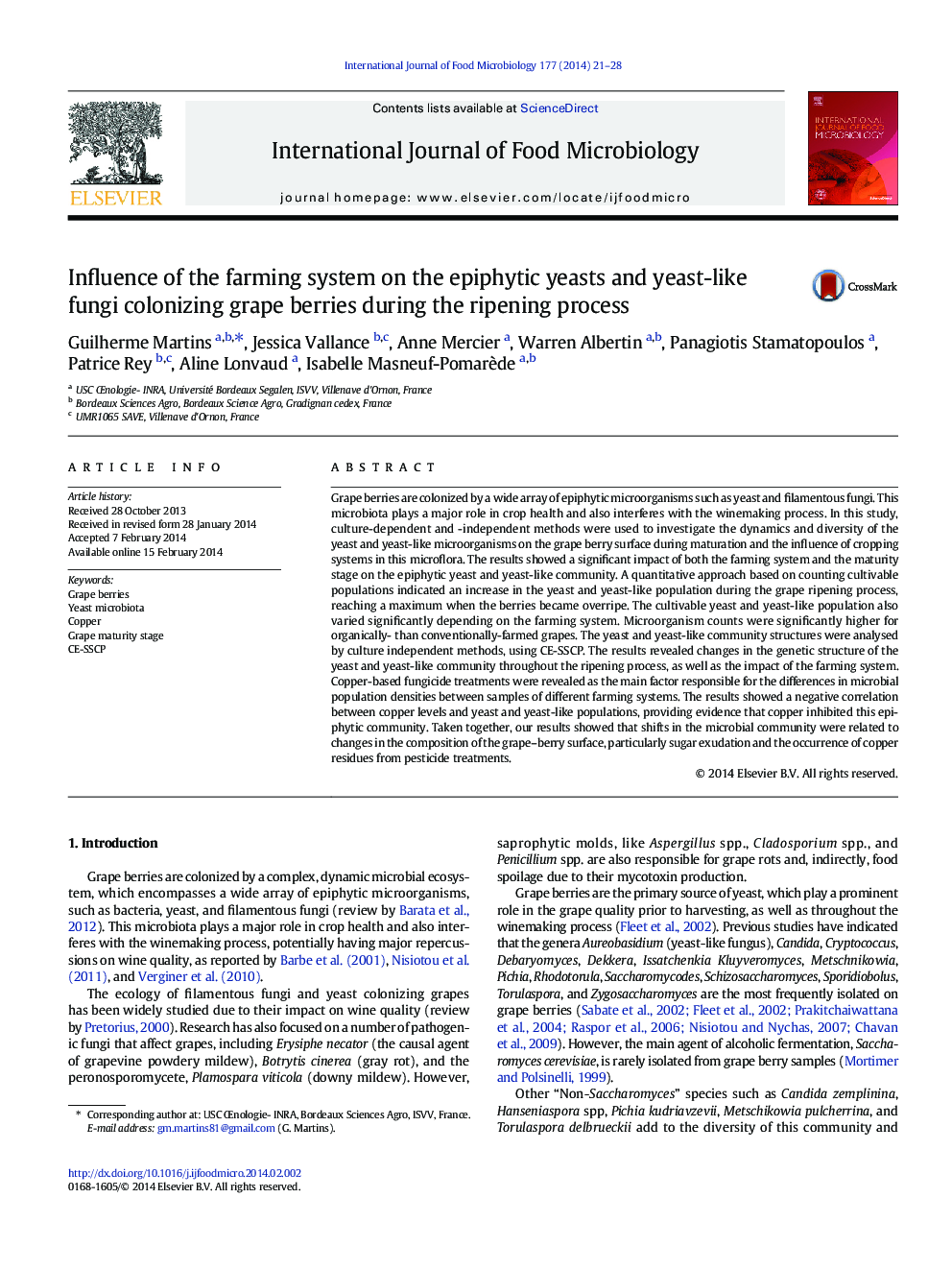| کد مقاله | کد نشریه | سال انتشار | مقاله انگلیسی | نسخه تمام متن |
|---|---|---|---|---|
| 4366967 | 1616605 | 2014 | 8 صفحه PDF | دانلود رایگان |
• Grape berry yeasts and yeast-like community changes over the ripening process.
• Yeasts and yeast-like population increase during the grape ripening process due to sugar exudation.
• Farming systems has a clear impact on the grape microbial community.
• Copper based fungicides negatively impact epiphytic yeasts and yeast-like community.
Grape berries are colonized by a wide array of epiphytic microorganisms such as yeast and filamentous fungi. This microbiota plays a major role in crop health and also interferes with the winemaking process. In this study, culture-dependent and -independent methods were used to investigate the dynamics and diversity of the yeast and yeast-like microorganisms on the grape berry surface during maturation and the influence of cropping systems in this microflora. The results showed a significant impact of both the farming system and the maturity stage on the epiphytic yeast and yeast-like community. A quantitative approach based on counting cultivable populations indicated an increase in the yeast and yeast-like population during the grape ripening process, reaching a maximum when the berries became overripe. The cultivable yeast and yeast-like population also varied significantly depending on the farming system. Microorganism counts were significantly higher for organically- than conventionally-farmed grapes. The yeast and yeast-like community structures were analysed by culture independent methods, using CE-SSCP. The results revealed changes in the genetic structure of the yeast and yeast-like community throughout the ripening process, as well as the impact of the farming system. Copper-based fungicide treatments were revealed as the main factor responsible for the differences in microbial population densities between samples of different farming systems. The results showed a negative correlation between copper levels and yeast and yeast-like populations, providing evidence that copper inhibited this epiphytic community. Taken together, our results showed that shifts in the microbial community were related to changes in the composition of the grape–berry surface, particularly sugar exudation and the occurrence of copper residues from pesticide treatments.
Journal: International Journal of Food Microbiology - Volume 177, 2 May 2014, Pages 21–28
